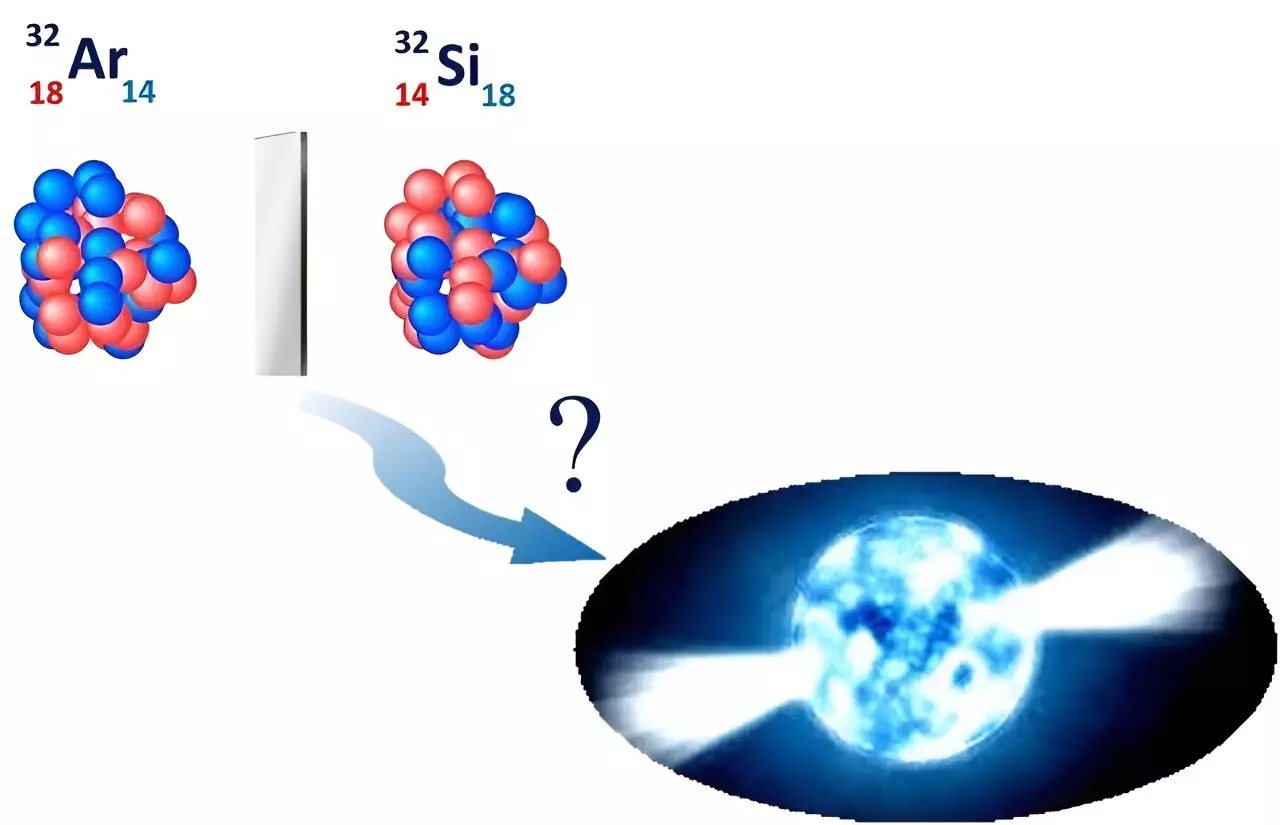Studies on the changes in the size of an atomic nucleus have revealed valuable insights into the energy levels of an atom’s electrons, known as isotope shifts. These precision measurements can help scientists determine the radius of a nucleus and provide essential information for understanding astrophysical objects such as neutron stars.
In a recent study, researchers conducted laser-assisted measurements of the nuclear radii of stable silicon isotopes, including silicon-28, silicon-29, and silicon-30. Additionally, they measured the radius of the unstable silicon-32 nucleus, which allowed them to compare it with its mirror nucleus, argon-32. This comparison helped set limits on variables necessary for describing the physics of objects like neutron stars.
Despite advancements in nuclear theory, scientists continue to face longstanding challenges in understanding nuclei. One of these challenges lies in connecting the description of nuclear size with the underlying theory of the strong nuclear force. Additionally, uncertainties remain regarding the reliability of nuclear theories in describing nuclear matter, especially in extreme conditions like those found in neutron stars.
Precision measurements of charge radii, such as those obtained through laser spectroscopy measurements at facilities like BECOLA at FRIB, play a crucial role in addressing these open questions. The information gathered from studying nuclear radii can provide valuable insights into the properties of dense neutron matter within neutron stars.
The results of the study on silicon isotopes serve as an important benchmark for the development of nuclear theory. By using the charge radii difference between silicon-32 and argon-32 nuclei, researchers were able to constrain parameters essential for describing dense neutron matter within neutron stars. These findings align with constraints from gravitational wave observations and other complementary sources of data.
The measurement of nuclear radii plays a significant role in advancing our understanding of astrophysical phenomena. By conducting precise measurements and connecting them to nuclear theory, scientists can continue to unravel the mysteries of nuclei and their components, ultimately contributing to our knowledge of the universe.


Leave a Reply
You must be logged in to post a comment.